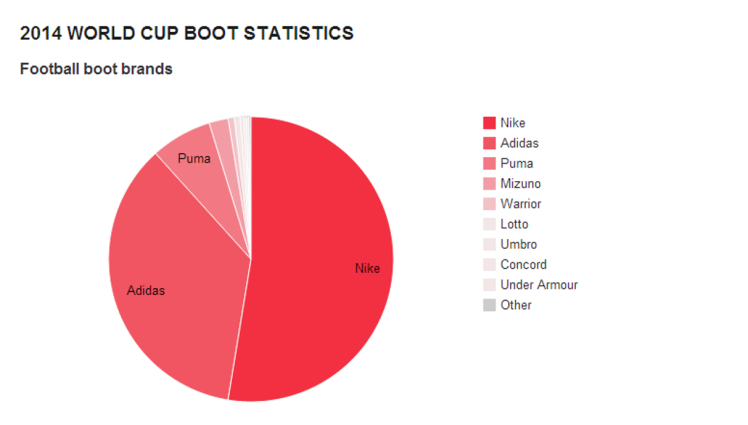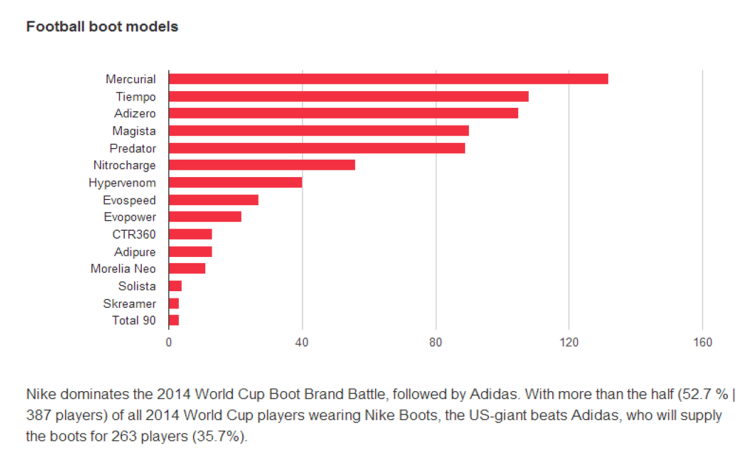Hi everyone,
World Cup sponsors contribute up to $400 million and in return, benefit from brand exposure and significant marketing rights and protection from the rights holder. However, is being a World Cup sponsor -or partner- still paying off?
Let me be clear. I believe that without sponsors, there is no event. However, if we have a close look at non official sponsors exposure and activities around the game, – let’s take Nike for that matter – it’s critical to know whether being a World Cup sponsor is still the best way to position your brand efficiently, engage with fans and ensure your return on investment.
First of all, on an image perspective, (some) FIFA sponsors raised concerns over bribery allegations over the 2022 World Cup in Qatar. Brands executives not keen on seeing their brands associated to rights holder’s turmoil is an understatement.
The fact that the rights holder’s brand image must be impeccable in order not to tarnish that of the sponsor is obvious, but it’s another debate.
For many years, the World Cup official sponsors and partners have had a unique business model that enables them to engage directly with fans through official licensed products, guarantees a powerful TV exposure thanks to TV rights and exclusive advertising rights.
That business model was seen as a very strong opportunity to get more than their return on investment. However, if we are having a close look at what non official sponsors are activating around the World Cup, the amount of exposure they get through their innovative marketing, the question is whether or not this business model is obsolete.
When I started my career, there was an “unspoken trend” that consisted of “slapping” a logo on a shirt or on a stadium board was enough to draw attention. Well, I don’t believe in that. In fact, I never did.
In football, if a brand wants to be successful, it has to engage fans with relevant local content, and find the right balance between brand value and sending the right message consistently.
Nike is doing just that. Not being associated to the World Cup, Nike achieved to tap into the World Cup through products, a strong marketing concept, players, social medias, and experiential marketing.
On a product standpoint, according to Footy Headlines, Nike dominates the 2014 World Cup Boot Brand Battle, followed by adidas.
With more than the half (52.7 % | 387 players) of all 2014 World Cup players wearing Nike Boots, the US-giant beats adidas, who will supply the boots for 263 players (35.7%).
Also, for the first time in World Cup history, the swoosh will have more federations in Brazil (10) than its arch rival adidas (9). I won’t go into the quality v quantity debate, but it’s a element that says a lot.
A consistent message has been put forward for 4 years: “Nike kits are made of recycled plastic bottles”. Nike does not communicate on the aesthetic of the kits, they communicate on the performance and hammer the message that every single one is made of recycled plastic bottles.
How best can you position your brand as the most eco-friendly sports brand by tapping into the world football event with world class teams?
On a digital standpoint, Nike recently launched “The Last Game”. A Five-minute animated film highlights the dangers of playing it safe. In 3 days, the video was watched on Youtube 26,895,919 times.
According to Magdalena Kondej (Head of apparel and footwear at Euromonitor), the efforts to date have seen Nike take a commanding lead over adidas when it comes to harnessing buzz around their brand and the World Cup.
Adidas has called on international legends David Beckham and Zinedine Zidane to star in the latest execution of its ‘All in, or nothing’ campaign and their live Youtube World Cup show the Dugout.
Nike secured 200,118 social mentions between the 20 April and 6 June, according to communications agency Way to Blue, with 99,725 positive affinity mentions about the brand and its World Cup campaign. Adidas sparked 88,041 mentions in comparison with 9,530 of these posts discussing a positive affinity with their campaign.
However, it is not just in the attention stakes Nike seems to be winning out. Purchase intent for the American company jumped 2.1 points to 14.6 over the last month, a statistically significant rise according to YouGov’s Brand Index, while Adidas’ score dropped 0.3 points to 10.9.
Nike also took top spot in terms of purchase consideration, which rose by just 0.1 to 37.3 in comparison to adidas’ score dropping 0.6 to to 35.7 points in period.
FIFA guarantees an exclusive zone around football stadiums to its partners. Official sponsors could showcase their products engage with fans etc. In response to that, Nike will also have a physical presence with the Nike Phenom House in Rio. Post World Cup, it will be interesting to compare the traffic at both fans venues.
There is much more on how Nike position themselves as non official sponsors and achieve to be strongly linked to the World Cup and much more on how adidas leverages its marketing rights pre-during and post World Cup.
However, considering Nike’s marketing and brand impact at an event they do not sponsor, the question still remains: “Is sponsoring the World Cup still paying off?”.
Karl Lusbec



Excellent piece Karl . Can u repeat the exercise after the World Cup as this will reveal any additional impact from the actual WC. Also can u compare total marketing spend for both brands during before & after eg if Nike spend £1b they’ll blow any other brand away. Am really looking forward to ur post WC comparison .
LikeLike
Hi Paul,
Thanks for the feedback. I will definitly do a follow up after the World Cup on sales, marketing, social medias, PR, etc for sports manufacturers. I am gathering info as I go along.
Stay Tuned!
LikeLike
Adidas Confident in Reaching Soccer Sales Target after World Cup Surge http://tinyurl.com/lgsf87j
– in case you missed it here’s one for your post world cup analysis
LikeLike
Hi Paul,
Thanks for sharing. I did see this news and in fact, it’s not surprising that adidas will hit their sales target. What will be an interesting focus point is whether or not they outweighed Nike on a social media/digital standpoint, whether or not the World Cup benefited the brand, whether or not being a World Cup partner justifies the initial investment, etc….Stay tuned!
LikeLike
Great piece Karl, Nike are totally owning the World Cup exposure so far. Also that Adidas advert is a rubbish take on Nike “Henry’s House” ad from years ago. https://www.youtube.com/watch?v=Z6fmywc7Ai4&feature=kp
LikeLike
Hi Stephen,
When I first saw the adidas ad, I did think of the Henry’s house ad Nike released back in 2004 IRC. I am surprised of the angle which is not (to me) “made in adidas”, but hey, they know what they are doing right?
In terms of exposure, back in 2010, Nike started off very strong and adidas caught up as the World Cup developed. This year, I think we experience another level of sports marketing and advertising which creates emulation and makes everything sooo exciting!
Stay tuned and thanks for sharing the article!
Karl
LikeLike